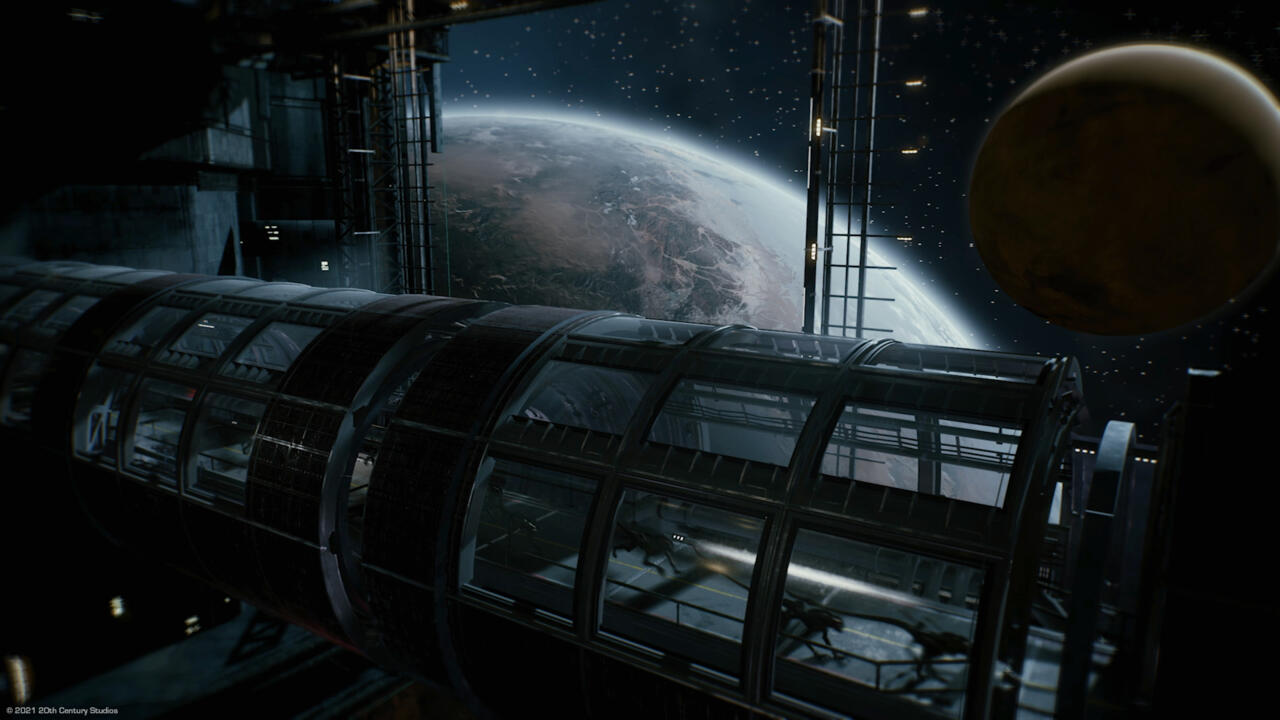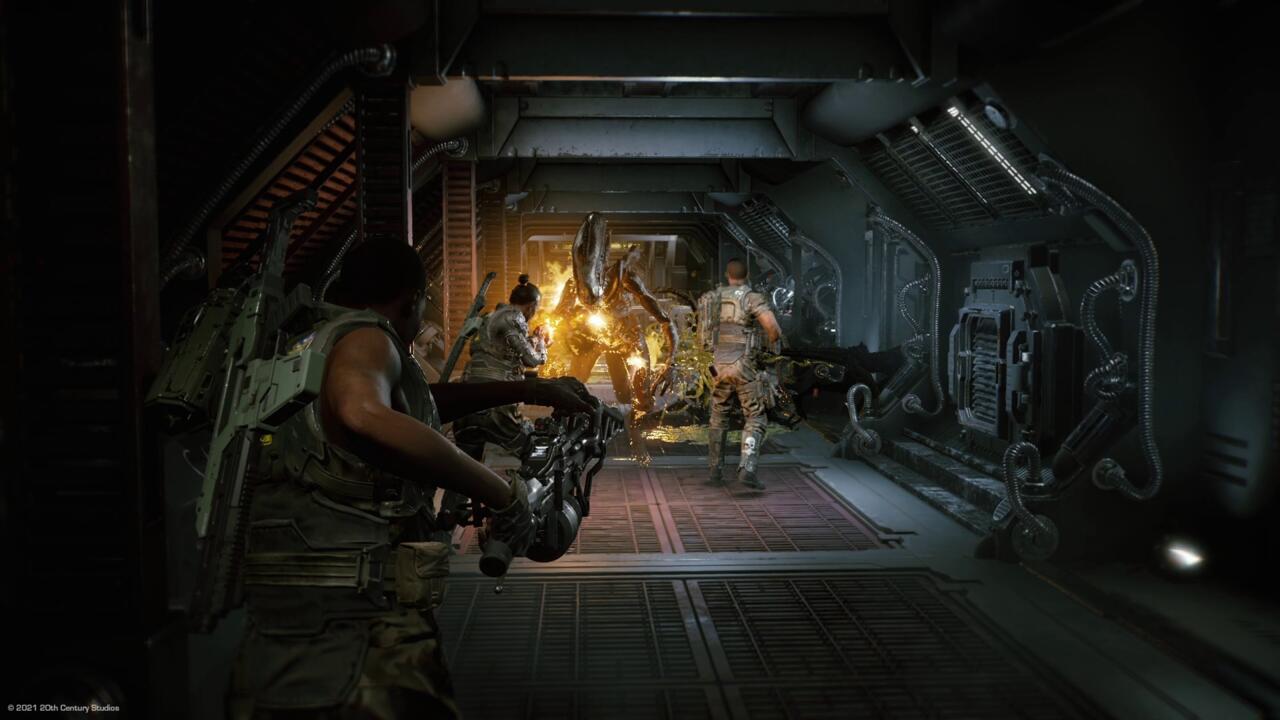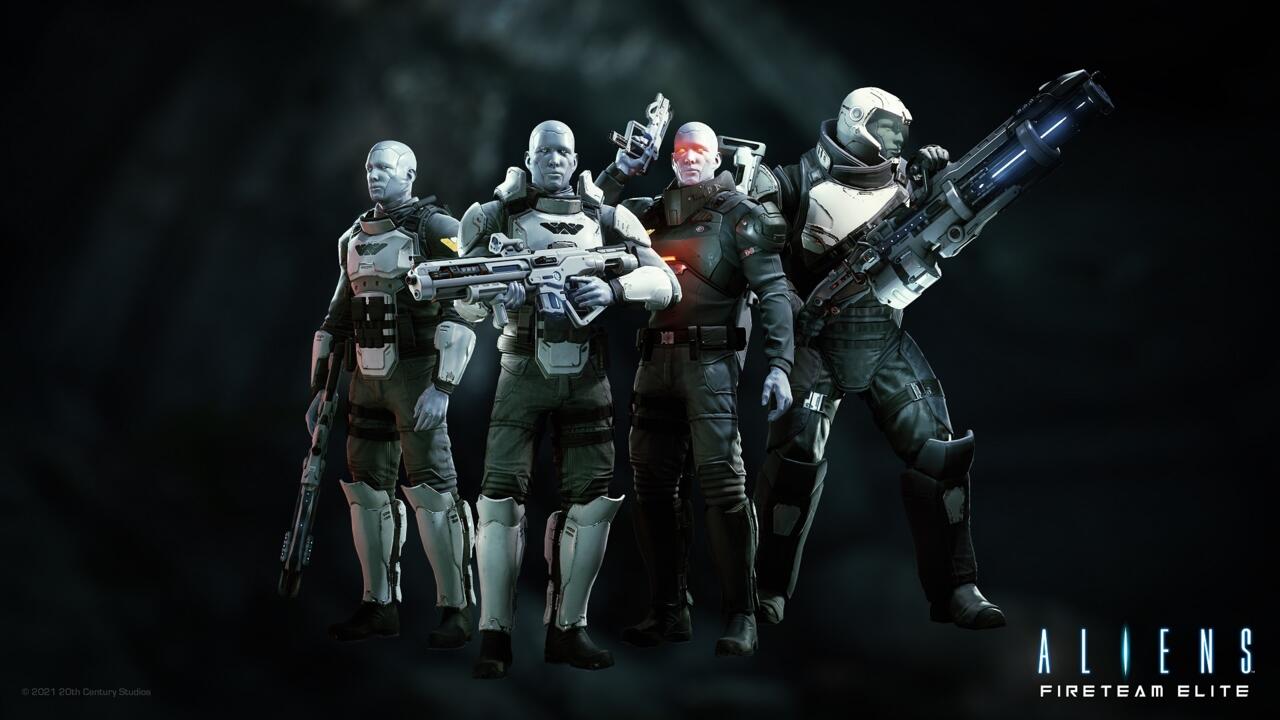The quintessential Aliens experience is the feeling that everything is falling apart.
That's exactly what Aliens: Fireteam Elite is going for. First, you head into a xenomorph-infested facility, confident in the firepower you're carrying to get you through any situation. Then, slowly, you find yourself more and more overwhelmed as you fight through swarms of aliens. A lurking creature leaps out from around a corner, pinning one of your teammates to the floor and ripping into them before you're able to blast it with a shotgun. Medpacks run out. Your ammo reserves are depleted.
Now, at the end of one of the game's missions, you're standing in front of an elevator, knowing that when you call it, the room is going to fill with vicious creatures that want to tear you apart--and they're not going to stop coming until you're dead. You've refilled your ammo from a conveniently placed crate, but the sentry guns and mines you've placed feel like they'll only slow the swarm down. No amount of superior firepower is going to be enough; all you've really got are your teammates to watch your back, and the hope that you can hold out long enough to make a break for it when your escape finally arrives.
In the eight or so hours of Aliens: Fireteam Elite we played in a preview build, this feeling came up again and again. It's the aspect of James Cameron's 1986 movie, Aliens, that most games based on the film struggle to capture, or miss altogether: the fact that the badass Colonial Marines lose. They spend most of the movie slowly getting picked off, setting up doomed defenses, and running for their lives. Fireteam Elite distills that sensation into a cooperative third-person shooter, one in which, regardless of how well-equipped you are, you're going to find yourself starting to sweat as threats close in from all sides.
You and up to two other players create your own Marines in Fireteam Elite, who are then dispatched to investigate a Weyland-Yutani mining operation that has gone dark (play alone, and the other two spots on your team are filled by AI-controlled combat synthetics named Alpha and Beta). At launch, the game takes place over four three-chapter campaigns, with each chapter lasting around 20 to 25 minutes. The overall feel of Fireteam Elite is similar to Left 4 Dead, with you and your teammates moving through an area and trying to accomplish objectives while constantly being attacked by waves of enemies. Often, you'll have to stop in a room and defend a position, or carefully listen for xenomorphs that have set up ambushes around corners or in hallways, waiting for you to arrive.
Our preview let us play through the first two campaigns of the game, and it was impressive how deep Aliens: Fireteam Elite digs into the franchise's vast lore to dredge up a variety of threats--and ways to deal with them. As you discover in the first campaign, the faceless but perennially evil Weyland-Yutani Corporation has uncovered something on the surface of planet LV-895, and they've used it to start experiments to mutate xenomorphs. That quickly creates a situation in which you're faced with a host of deadly new kinds of aliens that haven't appeared in the films before.

While it's long been established in the world of Aliens that xenomorphs change appearance and ability based on the hosts from which they're born--an alien that rips free from the chest of a human is more human-like, while one that comes from a dog will scrabble around on all fours, for example--Fireteam Elite quickly throws creatures at you that will spit acid from a distance, rush forward to explode, or hide on ceilings and in corners to leap out and pin you to the ground. Add in some of the tougher variations from other games, like the smart and human-like drone or the lethal, well-armored warrior, and you have lots of different xenomorphs to deal with that require you to quickly change your focus as a team to put down the most pressing threats, all while a room fills with more and more sleek monsters.
You have lots of options to fight back, however. Iconic Aliens weapons such as the pulse rifle, smart gun, flamethrower, and pump-action shotgun are at your disposal. Your loadout in a given mission is determined by the class you choose at its start: Gunners will remind players of rank-and-file Marines like Hicks with their pulse rifles and backup shotguns; Demolishers carry smart guns that can rip through hordes quickly; Technicians rely on close-quarters guns but carry a sentry gun that can be deployed over and over again; and Docs get a pulse rifle but give up a stronger secondary weapon in favor of a deployable item that can heal teammates.
Each class has its own perks and abilities that make coordinating with your team important. They all have special abilities that come with cooldown timers, which can buff the entire team at key moments. Gunners can use their Overclock ability to make everyone fire and reload more quickly, while Demolishers can knock back groups of swarming enemies while gaining a damage boost, Technicians' sentry guns convey a defense buff to anyone nearby, and Docs can boost everyone's reload and movement speed. There are also a host of consumables you can buy between missions or find in crates at key moments, which give you tactical options for defending positions with special ammo types, as well as the aforementioned mines and sentry guns.
The further we got into Fireteam Elite, the more our squad had to work together to find better strategies for survival. The first campaign sends you into an orbital refinery called Katanga in search of a survivor, which is not unlike the one towed by the Nostromo in the 1979 film Alien, and is absolutely overrun with xenomorphs thanks to Weyland-Yutani meddling. By the end of the campaign, you're escorting the survivor out, working to keep him alive along with yourself and your team as you run for a dropship under constant alien threat.

In the second campaign, you head down to the planet's surface, where you start to uncover what the Company has found. Here, Fireteam Elite starts to bridge with the newer Alien films, Prometheus and Alien: Covenant, as you explore vast caverns created by Prometheus' progenitor race, the white-skinned Engineers.
Weyland-Yutani gets serious about protecting what it has found on LV-895, and in the second campaign, a variety of synthetic soldiers join the fray alongside aliens. These included gun-wielding combat synths and the engineering-focused Working Joes of Alien: Isolation, illustrating the ways that Fireteam Elite is drawing from all corners of the franchise to fill out its world. Here, Fireteam Elite changes up its combat significantly. While you either stand your ground or constantly relocate to fight the mostly close-range aliens, the synth soldiers carry guns, turning Fireteam Elite into a cover shooter. But the game also mixes threats together and even has the aliens fighting the synths, so your strategy has to constantly change based on what's trying to kill you--and if you're smart, you'll find ways to let your enemies kill each other.
It's clear throughout Fireteam Elite that developer Cold Iron Studios has a full command of the Alien universe, and its combination of elements makes the world of the Colonial Marines feel much more fleshed out than a lot of its other Aliens material--including some of the films. Collectible lore items fill in background elements like the political situation between the Colonial Marines' government, the United Americas, and corporations like Weyland-Yutani. The game also works in deep cuts such as the Union of Progressive Peoples, the Soviet bloc successor faction that first appeared in author William Gibson's unproduced Alien 3 screenplay. And the campaign hints that there's a lot more going on with the inclusion of the Engineers, even though our preview didn't allow us to uncover more of their secrets.
The ability to go deeper into the story and world of Aliens pairs with a strategic focus that broadens as you play. Leveling up your Marine unlocks more equipment to try, allowing you to swap weapons and add attachments that make your guns more effective and provide bonuses that align with specific playstyles. As the gunner, you'll get a burst rifle that can swap into the pulse rifle slot, for example, or a submachine gun that can take the place of the shotgun. A magazine upgrade for your pulse rifle can increase your ammo stock, but it might also make the gun reload faster when fully empty or fire with more stability, and you'll need to pick which upgrades work best for you.

Along with new gear, you'll also unlock perks to apply to your classes, many of which can be mixed and matched between those classes to allow for continual customization. It's an expansive system that we only saw a glimpse of, but it seems like it could potentially offer a lot of different ways to use each of the game's four base classes.
It's also possible to customize the missions you play using Challenge Cards you can earn along the way, which add modifiers that sometimes make things easier, but mostly increase difficulty. The cards add complications to the situation, such as increasing the damage you take, restricting your available weapons, adding glitches to your motion tracker, or reducing the effectiveness of your guns if you don't land headshots. Fighting through those drawbacks earns you big boosts to your experience point gains if you're successful on a mission. Coupled with the game's internal artificial intelligence, which changes what kinds of enemies you'll face and where you'll run into them, it's a system that seems like it can help vary Fireteam Elite's missions in some big ways.
The question that might determine Aliens: Fireteam Elite's fate is whether it can consistently provide fun replay experiences, though. The four campaigns offered at launch seem like they'll give players a ton of variety to work through, but the formula will need to provide incentives to keep you playing. And while Fireteam Elite created some really harrowing moments for our group over several hours of play, it did feel like it fell into a bit of a repetitive pattern of moving from place to place and setting up defensive positions over and over. That said, we only saw two sets of missions, and across those two sets, Fireteam Elite provided a bunch of different enemies and challenges to deal with--and the story suggests things will only get more intense further on.
So it'll be interesting to see how Fireteam Elite keeps players engaged long-term. With unlockable weapons, attachments, perks, and cosmetic items, there are at least a lot of ways to continually customize your character, and things to chase along the way. Fireteam Elite is already poised to draw the most from the Aliens franchise of any game before it, and it seems to be in a unique position to tell an expansive, evolving Aliens story through a live-service game approach. For Alien fans, that's a pretty exciting prospect, and our early look at Fireteam Elite suggests there's a lot that Cold Iron Studios can draw on to continue to throw threats at Colonial Marines that'll have them endlessly fighting for their lives.




